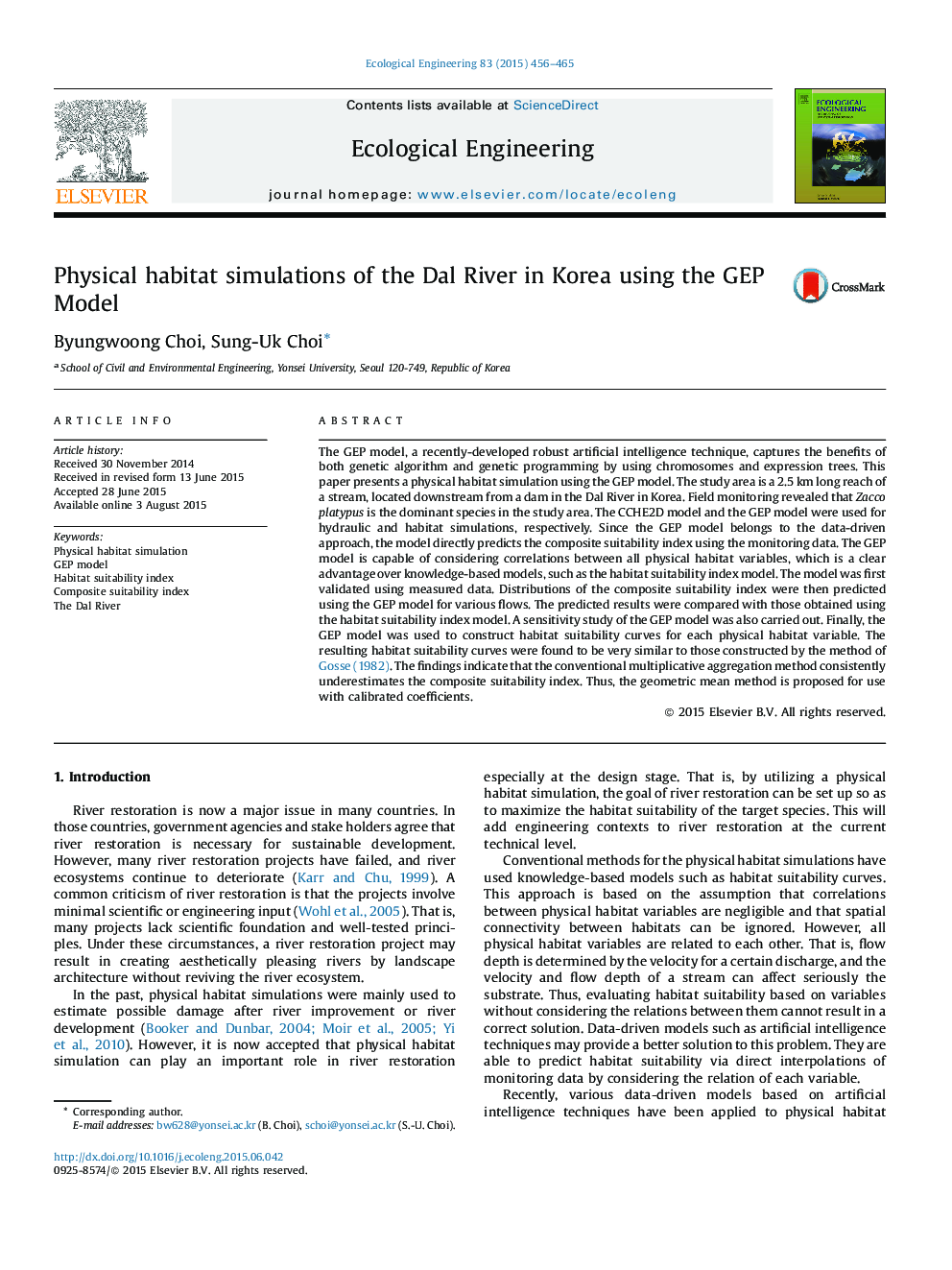| Article ID | Journal | Published Year | Pages | File Type |
|---|---|---|---|---|
| 4388897 | Ecological Engineering | 2015 | 10 Pages |
•This paper presented a physical habitat simulation using the GEP model.•The GEP model was applied to a 2.5 km long reach of a stream, downstream from a dam in the Dal River in Korea.•The model was validated using measured data, and distributions of the composite suitability index were predicted for various flows.•The GEP model was also used to construct habitat suitability curves.•Since the conventional method, the multiplicative aggregation method, was found to under-predict the composite suitability index consistently, an alternative method was proposed with calibrated parameters.
The GEP model, a recently-developed robust artificial intelligence technique, captures the benefits of both genetic algorithm and genetic programming by using chromosomes and expression trees. This paper presents a physical habitat simulation using the GEP model. The study area is a 2.5 km long reach of a stream, located downstream from a dam in the Dal River in Korea. Field monitoring revealed that Zacco platypus is the dominant species in the study area. The CCHE2D model and the GEP model were used for hydraulic and habitat simulations, respectively. Since the GEP model belongs to the data-driven approach, the model directly predicts the composite suitability index using the monitoring data. The GEP model is capable of considering correlations between all physical habitat variables, which is a clear advantage over knowledge-based models, such as the habitat suitability index model. The model was first validated using measured data. Distributions of the composite suitability index were then predicted using the GEP model for various flows. The predicted results were compared with those obtained using the habitat suitability index model. A sensitivity study of the GEP model was also carried out. Finally, the GEP model was used to construct habitat suitability curves for each physical habitat variable. The resulting habitat suitability curves were found to be very similar to those constructed by the method of Gosse (1982). The findings indicate that the conventional multiplicative aggregation method consistently underestimates the composite suitability index. Thus, the geometric mean method is proposed for use with calibrated coefficients.
Graphical abstractThis paper presented a physical habitat simulation using the GEP model. The GEP model is a recently-proposed robust artificial intelligence technique. Since the GEP model involves a data-driven approach, it directly predicts the composite suitability index (CSI) using monitoring data. The GEP model was applied to a 2.5 km long reach, downstream from a dam in the Dal River in Korea. The above figures show distributions of the CSI of the adult Zacco platypus for various flows predicted by the GEP model. It can be seen in the figure is that the CSI is higher in the vicinity of the bend and the reaches close to both ends. This is consistent with the CSI distributions computed by the HSI model ( Lee et al., 2014) and the ANFIS model (Jung and Choi, 2015). The CSI around the bend increases with increasing discharge up to the normal flow, then it decreases with increasing discharge. However, the CSI at both ends decreases with increasing discharge, but it increases elsewhere.Figure optionsDownload full-size imageDownload as PowerPoint slide
